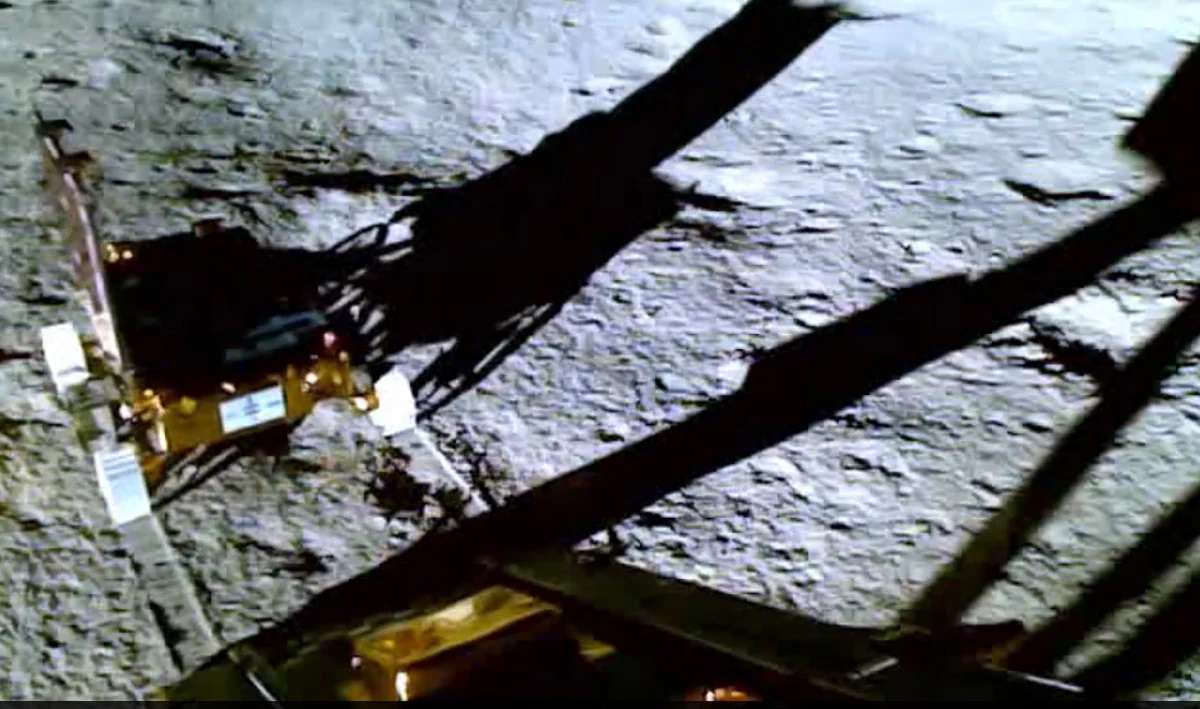India's space agency has released new footage that shows Chandrayaan-3's rover for the first time ever.
The video was taken just hours after the country made history by becoming the first to land near the south pole.
It shows Pragyaan (Sanskrit for wisdom) exiting the lander by sliding down a ramp and taking first steps on the lunar surface.
The Vikram lander - carrying the rover in its belly - had successfully touched down as planned on Wednesday evening.
With this, India joins an elite club of countries to achieve a soft landing on the Moon, after the US, the former Soviet Union and China.
On Thursday, the Indian Space Research Organisation (Isro) said the 26kg rover had "ramped down" from the lander and "India took a walk on the Moon!".
Friday morning's video showed the rover as it stepped out into the sunshine and its lengthening shadow.
Pragyaan - which moves at a speed of 1cm per second - is now roaming around the rocks and craters, gathering crucial data and images to be sent back to Earth for analysis. With each step, it's also leaving on the Moon's surface the imprint of Isro's logo and emblem embossed on its six wheels.
The rover is carrying two scientific instruments which will try to find out what minerals are present on the lunar surface and study the chemical composition of the soil.
Pragyaan will communicate only with the lander which will send the information to the orbiter from Chandrayaan-2 - which is still circling the Moon - to pass it on to the Earth for analysis.
The landing on Wednesday coincided with the start of a lunar day - a day on the Moon equals a little over four weeks on Earth and this means the lander and rover will have 14 days of sunlight to charge their batteries.
Once night falls, they will discharge and stop working. It is not yet clear whether they will come back to life when the next lunar day starts.
The lander is also carrying several scientific instruments which will help find out what goes on the Moon's surface and above and below it.
Moon is thought to hold important minerals but one of the major goals of Chandrayaan-3 is to hunt for water - scientists say the huge craters in the south pole region which are permanently in shadow hold ice which could support human habitation on the Moon in future.
It could also be used for supplying propellant for spacecraft headed to Mars and other distant destinations.
The landing came just days after Russia's Luna-25 spacecraft spun out of control and crashed into the Moon.








